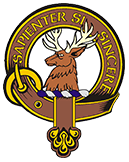Alister’s Early Life Memoires
Bill won a returned services ballot that assisted him onto a “rehab” farm in the North [Returned from WW I]. Rehab Farms were allocated to Returned Servicemen to help them get “on their feet.” Blocks of Government owned land were split up into what was considered a viable farm block. These farms were then balloted for the resettlement of returned servicemen.
Our farm (the farm allocated to my father, Bill) was approximately 900 acres and divided into 4 paddocks. There was little cleared land most of it being in bush or scrub. The farm was situated some 25 miles from Dargaville which at that time was a thriving river port dealing mostly in timber.

1936 Ford “Beauty”
Access to the farm was difficult. It was situated at the end of a “blind” [i.e. “dead end”] clay road and in wet weather it was very slippery when chains had to be used – not much fun on a dark wet night. The road was also very narrow and winding and I was invariably sick on the way home. When the road was impassable, which in the winter was quite often, we used a horse and sledge to travel the three miles across rugged terrain to reach the Northern Wairoa River and thence by river steamer to Dargaville.
Our first car was a “Beauty” Ford with a hand throttle, brake and clutch pedal – not the easiest car to drive. It had canvas curtains and was cold and draughty especially in the winter. My Mother drove the Ford over these dreadful roads quite happily but when we bought a Chevrolet car my Mother refused to drive it and she never drove again.
The Farm

Kauri Tree
First the land had to be cleared of the bush and scrub. First the trees, mostly large native trees – Kauri [very large evergreen tree, New Zealand’s version of the California Redwood], Rimu [New Zealand Cypress], and Totara [2nd largest tree species in New Zealand. A single totara trunk could be hollowed out to make an ocean-going canoe holding 100 Maori warriors] – had to be felled. Not an easy task. Bullock teams were used to transport the felled timber to the road to be then transported by truck to the river and from there they were rafted to the sawmill in Dargaville. This was followed by burning off and clearing the scrub. Everything that had to be moved around the farm was moved by horse and sledge. Ploughs were pulled by draught horses. Fencing into smaller paddocks was most arduous. We had only two-man cross-cut saws, picks, spades, shovels and axes. It was very hard work in the heavy clay soil. All posts and batons had to be cut with cross-cut saws and axes. Logs were cut using cross-cut saws into post and baton lengths, then split with axes and wedges.

